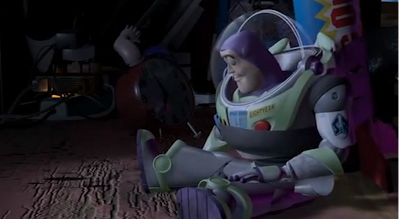The first recorded evidence of VFX was in a short film in 1895 by Thomas Edison and Alfred Clark
"The Execution of Mary Queen of Scotts". George Melies was a film maker who created the famous
"A Trip to the Moon" in 1902. Melies was responsible for creating of many visual effects in his films. In 1927
"Metropolis" was presented to the world, it is considered to be the first feature length science fiction film. It was created by Fritz Lang and Eugen Schufftan. In 1933 Cooper and Schoedsack created
"King Kong". The special effects used in this monster movie included Stop motion animation with live action, it was animated by Willis H O'Brien. Blue Screening was first majorly used in
"The Thief of Bagdad". Larry Butler won an Oscar for the visual effects in "The Thief of Bagdad". This film was created in 1940. Byron Haskin directed
"War of The Worlds" in 1953. Many people was a part of creating the many miniatures and matte paintings used throughout the film.
"The Ten Commandments" was a biblical epic movie with an enormous cast and giant sets, tons of visual effects were used throughout. This is Cecil B. Demilles masterpeice, that was created in 1956. Don Chaffey's version of
"Jason and The Argonauts" is known world widely for Ray Harryhausen's immaculate stop motion that was integrated into this masterpiece. It was released in 1963. Stanley Kubrick created the amazing
"2001: A Space Odyssey" in 1968, this is a masterpiece of cinema and visual effects. Douglas Trumbull was one of the VFX supervisors and is a legend in the industry. Michael Crichton directed
"Westworld" in 1973. It was the first feature to use digital image processing and effects which were created by Brent Sellstrom. We all know the world famous
"Star Wars" movie, which George Lucas founded ILM ( Industrial Light and Magic) which created the first ever computer generated images for his film. In 1982
"Tron" was created, Tron was the first feature length film to use 3D CGI. Four Leading Computer Graphics companies were hired by Disney to create the CGI for the film. In 1988 Robert Zemeckis created
"Roger Rabbit". This film includes traditional animation, CGI and live action sequences to allow the "Toons" to exist in the real world, Ken Ralston supervised the visual effects on this film. Steven Spielberg directed the first full digital composite with
"Indiana Jones and the Last Crusade " in 1989. Again ILM was responsible for the visual effects due to George Lucas writing and producing the film. Jame Cameron in 1991 directed
"Terminator 2". This film demonstrated a leap forwards in using CGI in films, it also brought one of the first fully CGI main characters in th T-1000. Cameron employed Fantasy II Film Effects and ILM to create the visual effects for this film, which he has done before in a previous film "The Abyss". In 1993 Steven Spielberg created the legendary film
"Jurassic Park". This was a landmark visual effects movie that pushed animatronic effects to new levels, it also helped to develop many of the CGI techniques used today in character modelling and rigging. Industrial Light and Magic were resposible for the majority of visual effects in the original release. In 1995 John Lasseter created
"Toy Story". Toy Story is the first full film to use CGI throughout, Pixar created all of the computer generated imagery for this film. Wachowski Bros. created
"The Matrix" in 1999. The Matrix was the first time CG frame interpolation was used in a feature film. Frame interpolation enabled the development of the "Bullet Time" effect. Animal Logic and Manex Visual Effcets produced the lions share of visual effects for The Matrix. Peter Jackson set a new benchmark for visual effects with the
"Lord of The Rings: Fellowship Of The Ring" using both physical and CGI but the real groundbreaker was the development of Massive Prime, Crowd simulation software with artificial intelligence. This enabled the creation of huge battle sequences. Digital Dom and Weta Digital was the ones behind the astonishing visual effects. Kerry Conran directed
"Sky Captain & the World of Tomorrow" in 2004, this film was the first feature length to have an entire background created by CGI with a live action cast. There were so many companies contributing to the visual effects such as ILM, The Orphanage, Stan Winston Digital, Cafe FX and Hybride. And last but not least is
"Avatar" which is another groundbreaking film created by the genius James Cameron. Avatar was the first feature film made using "performance capture" which allows the virtual world and virtual characters to be shot in real time. This was another film that had many different VFX studios contributing including, Weta Digital, Framestore, Giant Studios, ILM, Hydralux, Prime Focus and many more.
 |
| A Trip to the Moon |
 |
| King Kong |
 |
| The Ten Commandments |
 |
| 2001:A Space Odyssey |
 |
| Tron |
 |
| Jurassic Park |
 |
| Toy Story |
 |
| Lord of the Rings: the Fellowship of the Ring |
 |
| Sky Captain & The World of Tomorrow |
All Images and videos maybe subject to copyright.

















































